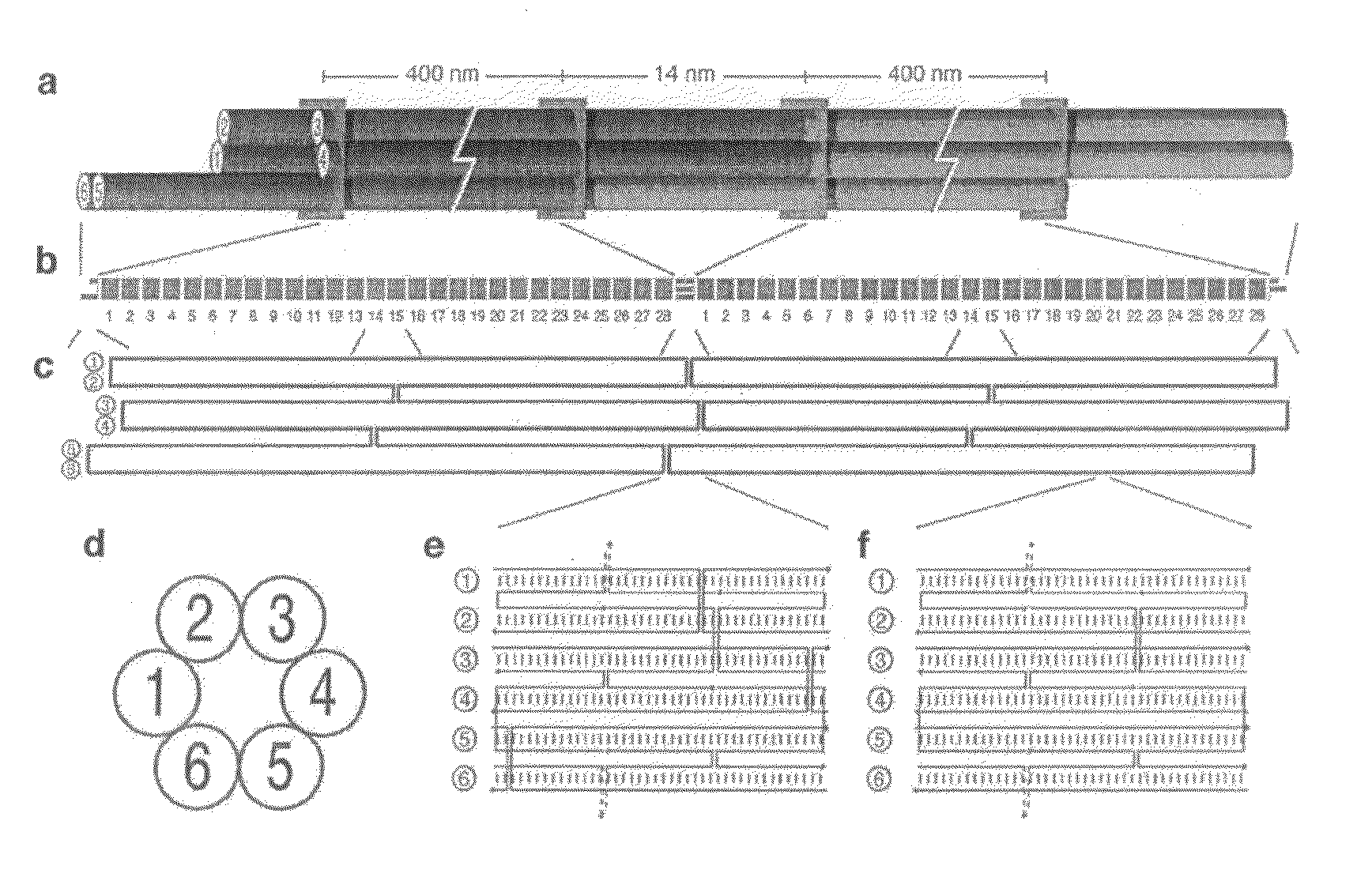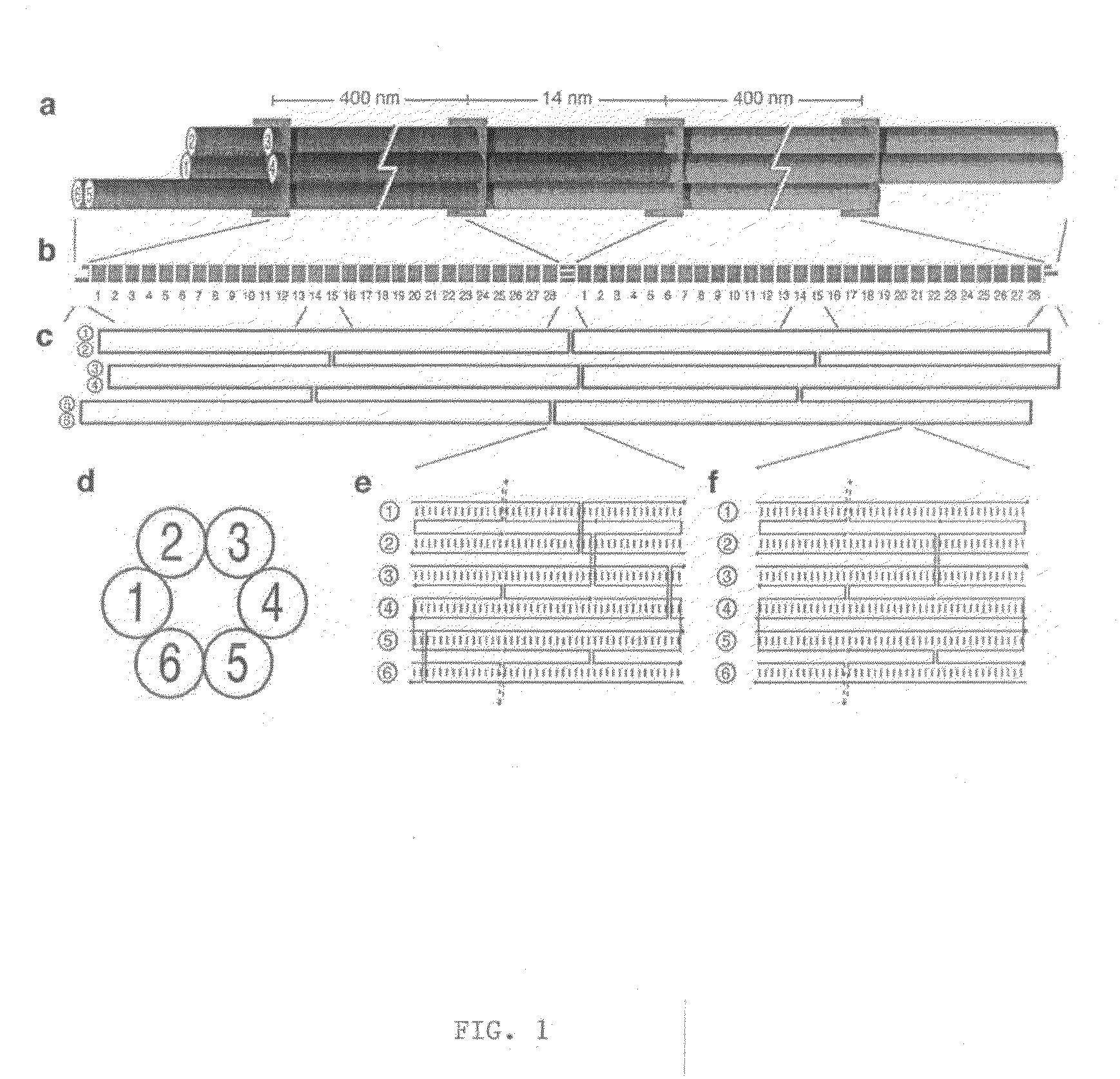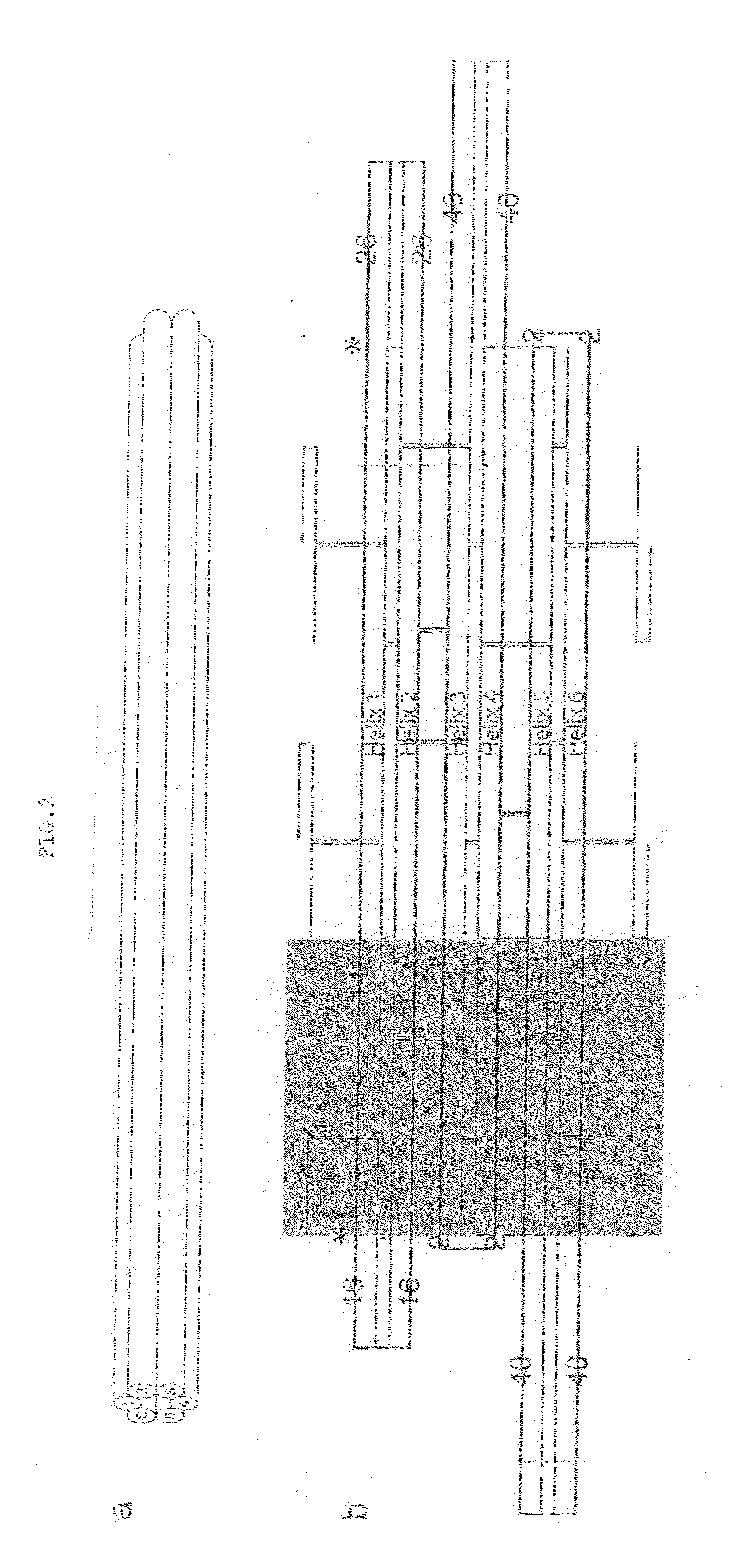Nucleic acid nanotube liquid crystals and use for nmr structure determination of membrane proteins
a technology liquid crystals, applied in the field of nucleic acid nanotubes, can solve the problems of significant bottleneck in the direction of reradiation, measurement using nmr, structure determination of membrane proteins, and slow rate of membrane-protein structure determination,
- Summary
- Abstract
- Description
- Claims
- Application Information
AI Technical Summary
Benefits of technology
Problems solved by technology
Method used
Image
Examples
example 1
Preparation of DNA Nanotubes
[0087]M13 single stranded scaffold DNA (sequence shown in FIG. 12A-C) was obtained from phage produced from infected F+ bacteria grown in 2× YT media. Purified single-stranded DNA was extracted from the phage using a Qiagen Gigaprep ion-exchange column. Six-helix bundle DNA nanotubes were folded directly from the eluate of a Qiagen Gigaprep ion-exchange column, eluted at 50 mM Tris pH 8.5 (Fisher Scientific), 1.6 M NaCl (Fisher Scientific), 15% isopropanol. In the folding reaction, the buffer was diluted to 1 M NaCl, 9% isopropanol, along with 50 nM of the organic chemical buffer HEPES (4-2-hydroxyethyl-1-piperazineethanesulfonic acid) pH 7.5 (Sigma), 10 mM MgCl2 (Fisher Scientific). The scaffold concentration was at 6 nanomolar and the staple oligonucleotide (sequences shown in FIG. 13A-D) concentrations were at 36 nM each. The isopropanol did not interfere with the folding. Folding was performed by heating the suspension in 100 mL Pyrex bottles in 2 L b...
example 2
[0089]Recombinant M13 Bacteriophage Plasmid (p7308) Construction
[0090]Recombinant M13 filamentous bacteriophage was prepared by replacement of the BamHI-XbaI segment of Ml3mp18 by a polymerase chain reaction-generated 59 base pair (bp) fragment encoding a randomly-selected sequence (FIG. 14), flanked by positions −25 to +25 of the middle of the XbaI cut site(T̂CTAGA, or base 6258). A list of oligodeoxyribonucleotides that were used to construct the insert with flanking regions (109 bp total) is shown in FIG. 15. Double-stranded (replicative form) bacteriophage M13 DNA bearing the 59 base insert was prepared as described in Sambrook, J. & Russell, D. Molecular cloning: A Laboratory Manual (Cold Spring Harbor Laboratory Press, Cold Spring Harbor, 2001). The 59 bp insert was verified by a double restriction digest with BamHI and XbaI, followed by sequencing. The result was a modified bacteriophage M13 genome, 7308 bases in length. The full sequence is shown in FIG. 16.
example 3
Nanomole-Scale Production of M13 Bacteriophage Single-Stranded DNA
[0091]Recombinant M13 bacteriophage RF dsDNA was transformed into JM101 cells and grown overnight at 37° C. on an LB-agar plate (BD Diagnostics). A single, well-isolated plaque was used to inoculate 2 ml of 2× YT medium in a 14 mL sterile culture tube and agitated for 8 hours at 37° C. Bacterial cells were pelleted by centrifugation and phage was recovered from the supernatant by polyethylene glycol fractionation (incubation on ice for 30 minutes using a final concentration of 4% PEG8000, 0.5 M NaCl) followed by centrifugation. The phage was resuspended in 100 μL of 10 mM Tris.Cl pH 8.5 (Fisher Scientific) and labelled “pre-inoculation phage.”E Coli JM109 cells were grown overnight in 3 mL of 2× YT medium at 37° C. The 3 mL of JM109 culture was added to a 2 L flask containing 300 mL 2× YT medium supplemented with MgCl2 to 5 mM final concentration and incubated at 37° C. on a shaker at 300 rpm. When the bacterial cultu...
PUM
| Property | Measurement | Unit |
|---|---|---|
| length | aaaaa | aaaaa |
| length | aaaaa | aaaaa |
| length | aaaaa | aaaaa |
Abstract
Description
Claims
Application Information
 Login to View More
Login to View More - R&D
- Intellectual Property
- Life Sciences
- Materials
- Tech Scout
- Unparalleled Data Quality
- Higher Quality Content
- 60% Fewer Hallucinations
Browse by: Latest US Patents, China's latest patents, Technical Efficacy Thesaurus, Application Domain, Technology Topic, Popular Technical Reports.
© 2025 PatSnap. All rights reserved.Legal|Privacy policy|Modern Slavery Act Transparency Statement|Sitemap|About US| Contact US: help@patsnap.com



